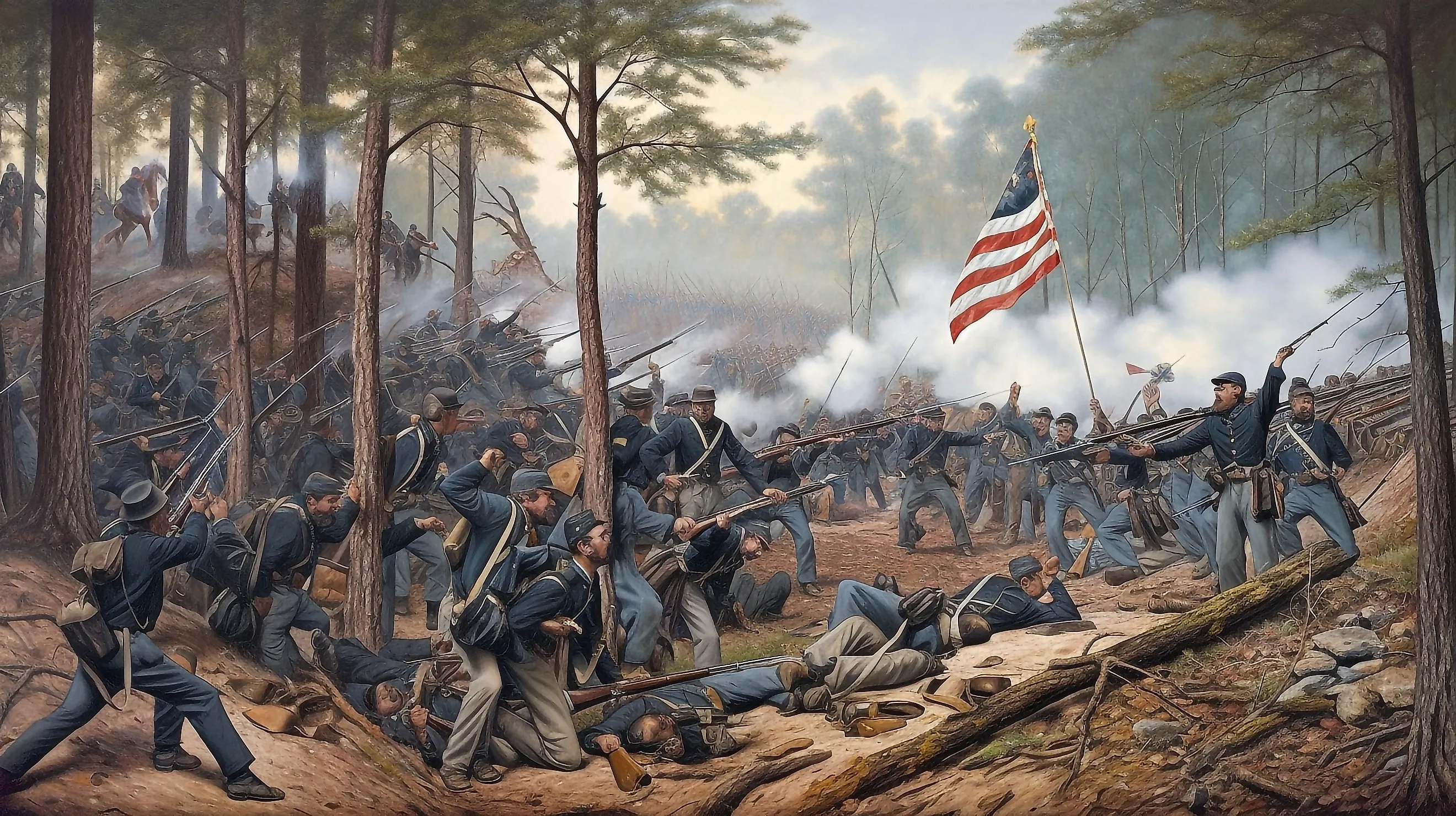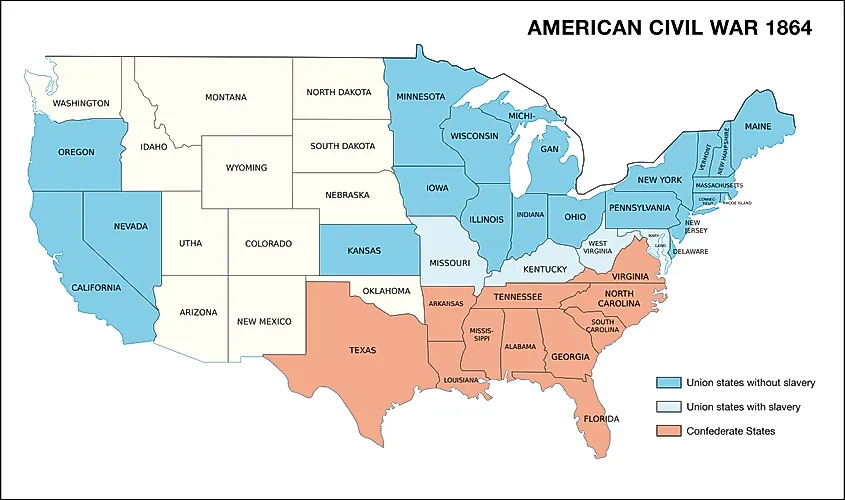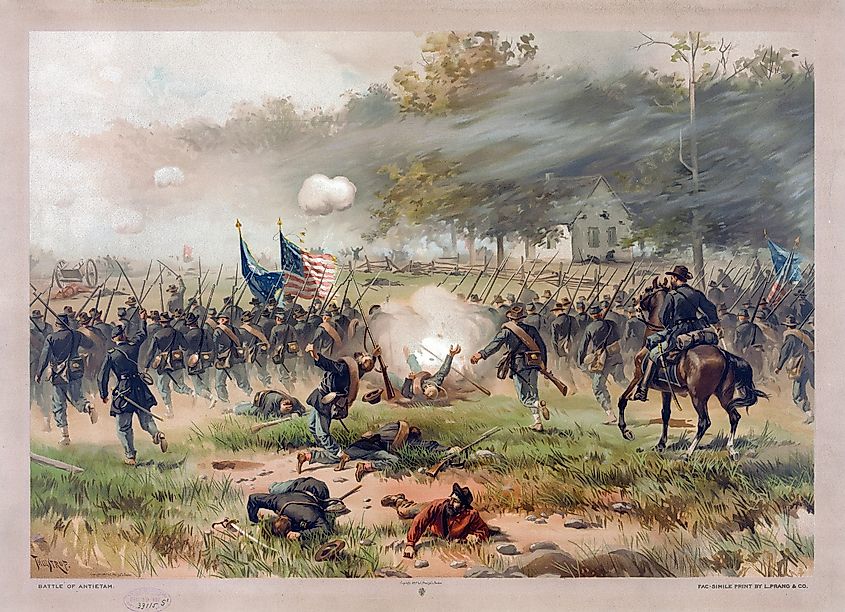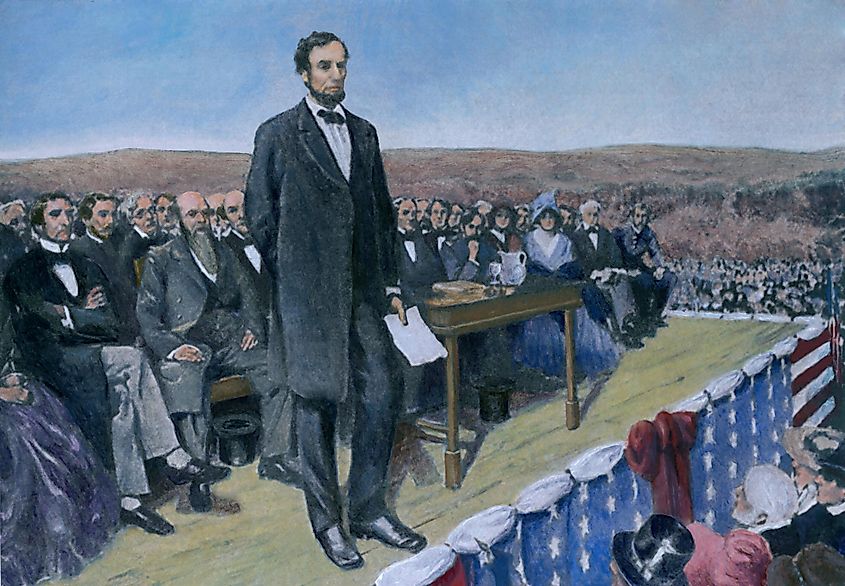
What Is Sectionalism In US History?
Sectionalism, at least in the American context, refers to a time during the 18th and 19th centuries when a large section of United States citizens saw themselves not as Americans first but rather attached themselves to a regional or state identity. In most of day-to-day life, this attachment to a local identity rather than a national one had little to no downside. However, this attitude eventually turned ugly in the lead-up to the American Civil War between the northern and the southern states, and, of course, drove the nation even further into conflict.
States A World Apart

Up until the last hundred years or so, it was not common for the average person to travel outside of their state or even town limits aside from the odd exception here and there. Most people lived their lives in small, close-knit communities and were not often exposed to other ways of life that existed within their nation.
The United States was no exception to this pattern of behavior and saw this kind of Sectionalism most pronounced amongst the various states in its Union. For instance, the social norms and structure of 19th-century Louisiana would have been incredibly different from that of New York or Maine. Despite existing within the same nation, these states might have well existed on different planets as far as most people were concerned.
This type of isolation led to a near-endless amount of unique identities that existed in various states and towns. Even states that bordered one another often had little in common in terms of shared culture. This is why most people had a much harder time buying into a single American identity rather than a Texan or Georgian one. While, for the most part, this stark separation of culture was harmless, it was not always so benign.
The North And South Divide

In the build-up to the American Civil War, the cultural and political divide between the Northern and Southern states was at an all-time high. Many Northerners saw the South as a backward and stagnant place filled with uneducated brutes who were quick to anger and had a liking to violence. The South, on the other hand, saw the North as snobbish elitists who were determined to destroy their way of life and decimate the regional economy by abolishing slavery.
By the middle of the 19th century, the North had heavily industrialized, whereas the South had lagged behind by clinging to their slave-based agricultural cash crops like tobacco, cotton, and sugar. The industrialization of the North quickly led to the North surpassing the South in terms of wealth and influence. Something that only further fueled the resentment towards the Northern states.
The average Southerner was much poorer and less educated than his Northern counterpart, regardless of race. As the power gap continued to widen, the anxiety of the Southern states only grew.
The Confederacy

After the abolitionist, Republican candidate Abraham Lincoln won the 1860 election, it did not take long for many of the Southern states to leave the Union (that now comprised the northern states). Only a few months after Lincoln was sworn into office, the Confederacy (a union of eleven southern states that supported slavery) had already declared its independence.
From an economic and governmental perspective, it was the continuation of the institution of slavery that drove the South to succeed in the first place. But it does go deeper than that. The majority of White Southerners did not own slaves but still supported leaving the US under the justification of cultural differences. Many Southerners saw themselves as distinct people from their Northern neighbors and viewed the Confederacy as an opportunity to protect and maintain their unique way of life and pursue their destiny without the pesky meddling of outside influence.
After The War

The Civil War that ensued between the Union and the Confederacy did little in the way of ending regional and cultural divides throughout the United States. The South would take decades to recover from the war's devastation, but it retained its culture and unique lifestyle. Even in the modern United States, the South, along with just about every other region in the nation, has its own interesting character. While there are flare-ups now and again of regional interest trumping the nation's interests, it has not gotten anywhere near what was present in the 1800s.
Sectionalism will likely always exist in the US in one form or another. With a nation that large and with so many different people, it is hard for at least some people not to have strong connections to their own region or state and struggle to connect to others on a national level. After all, it is the close ties people have to their community and town that give America one of the most varied and diverse cultures on the planet. In many ways, Sectionalism has been the rule in the United States rather than the exception.











